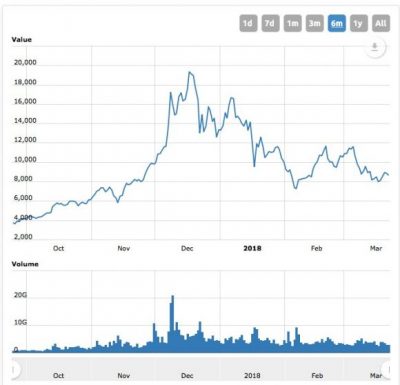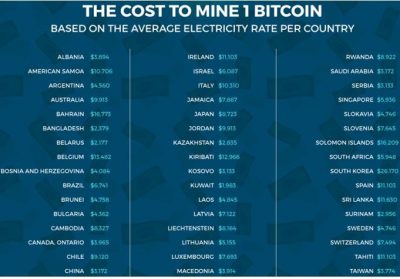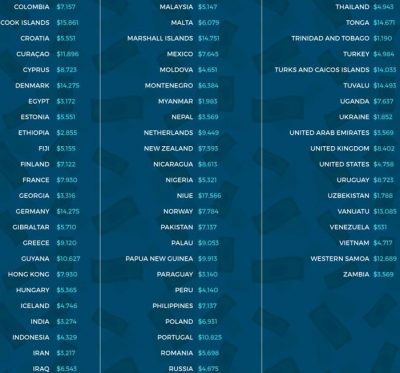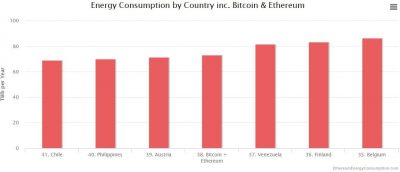If Jack Dorsey's proclamation that bitcoin will be anointed the global "single currency," it could spawn a crescendo of pollution the world has never seen before.
In a candid interview with The Times of London, Dorsey, the workaholic CEO of Twitter (TWTR) and Square (SQ), offered a 10-year time horizon for his claim to come to fruition.
The originators of cryptocurrency derive from a Robin Hood-type mentality circumnavigating the costly fees and control associated with banks and central governments.
Unfolding before our eyes is a potential catastrophe that knows no limits.
Carbon emissions are on track to cut short 153 million lives as environmental issues start to spin out of control while the world's population explodes to 9.7 billion in 2050, from 8.5 billion people in 2030, up from the 7.3 billion today. All these people will need to barter in bitcoin, according to Jack Dorsey.
Cryptocurrency is demoralizingly energy intensive, and the recent institutional participation in crypto server farms will exacerbate the environmental knock on effects by displacing communities, destroying wildlife, and climate-changing carbon emissions.
This seemingly controversial means to outmaneuver the modern financial system has transformed into a murky arms race among greedy crypto currency miners to use the cheapest energy sources and the most efficient equipment in a no-holds-barred money grab.
Bitcoin and Ethereum mining combined energy consumption would place them as the 38th-largest energy consuming country in the world - if they were a country - one place ahead of Austria.
Mining a bitcoin adjacent to a hydropower dam is not a coincidence. In fact, these locales are ground zero for the mining movement. The common denominator is the access to cheap energy usually five times cheaper than standard prices.
Big institutions that mine cryptocurrency install thousands of machines packed like a can of sardines into cavernous warehouses.
In 2015, a documentary detailed a large-scale foreign mining operation with an electricity outlay of $100,000 per month to create 4,000 bitcoins. These are popping up all over the world.
An additional white paper from a Cambridge University study uncovered that 58% of bitcoin mining comes from China.
Cheap power equals dirty power. Chinese mining outfits have bet the ranch on low-cost coal and hydroelectric generators. The carbon footprint measured at one mine per day emitted carbon dioxide at the same rate as five Boeing 747 planes.
The Chinese mining ban in January set off a domino effect with the Chinese mining operations relocating to mainly Canada, Iceland, and the United States. Effectively, China has just exported a tidal wave of new pollution and carbon emissions.
Bitcoin is mined every second of every day and currently has a supply of from approximately 17 million today, up from 11 million in 2013. Bitcoin's electricity consumption has been elevated compared to alternative digital payment currencies because the dollar price of bitcoin is directly proportional to the amount of electricity that can profitably be used to mine it.
To add more granularity, miners buy more servers to maintain profitability then upgrade to more powerful servers. However, the new calculating power simply boosted the solution complexity even faster. The mine was practically outdated upon launch, and profitability could only occur by massively scaling up.
Consumer grade personal computers are useless now because the math problems are so advanced and complicated.
Specialized hardware called Application-Specific Integrated Circuit (ASIC) is required. These mining machines are massive, hot, and guzzle electricity.
Bitcoin disciples would counter, describing the finite number of bitcoins - 21 million. This was part of the groundwork laid down by Satoshi Nakamoto (a pseudonym), the anonymous creator of bitcoin, when he (or they) constructed the digital form of money.
Nakamoto could not have predicted his digital experiment backfiring in his face.
The bottom line is most people use bitcoins to literally create money out of thin air in digital form, rather than using it as a monetary instrument to purchase a good or service. That is why people mine cryptocurrency, period.
Now, excuse me while I go into the weeds for a moment.
Enter hard fork.
A finite 21 million coins is a misnomer.
A hard fork is a way for developers to alter bitcoin's software code. Once bitcoin reaches a certain block height, miners switch from bitcoin's core software to the fork's version. Miners begin mining the new currency's blocks after the bifurcation, creating a new chain entirely and a brand spanking new currency.
Theoretically, bitcoin could hard fork into infinite new machinations, and that is exactly what is happening.
Bitcoin Cash was the inaugural hard fork derived from the bitcoin's blockchain, followed by Bitcoin Gold and Bitcoin Diamond.
Recently, the market of hard fork derivations include Super Bitcoin, Lightning Bitcoin, Bitcoin God, Bitcoin Uranium, Bitcoin Cash Plus, Bitcoin Silver, and Bitcoin Atom. All will be mined.
The hard fork phenomenon could generate millions of upstart cryptocurrency server farms universally planning to infuse market share because new currencies will be forced to build up a fresh supply of coins.
If Peter Theil's prognostication of a 20% to 50% chance of bitcoin's price rising in the future is true, it could set off a cryptocurrency server farm mania. By the way, Theil also believes that there is a 30% chance that Bitcoin could go to zero.
A surge in price of bitcoin results in mining cryptocurrency operations everywhere by any type of electricity, especially if the surge maintains price stability. Even mining in Denmark, where one finds the world's costliest electricity at $14,275 per bitcoin, would make sense.
Recently, miners' appetite for power is causing local governments to implement surcharges for extra infrastructure and moratoriums on new mines. Even these mines built adjacent to hydro projects are crimping the supply lines, and consumers are forced to buy power from outside suppliers. Miners are often required to pay their utility bills months in advance.
By July 2019, mining will possibly need more electricity than the entire United States consumes. And by February 2020, bitcoin mining will need as much electricity as the entire world does today, according to Grist, an environmental news website.
Geographically, most locations around the world could be profitable based on today's bitcoin price of $9,000. The few places that are exorbitant are distant, tropical islands, such as the Cook Islands at $15,861, to mine one bitcoin. If you'd like to drop your life and make a fortune mining bitcoin, then Venezuela is the most lucrative at $531 per bitcoin.
Who doesn't like free money? Set up a few devices, crank up the power, collect the coins, pay off the electricity bill, pocket the difference and hopefully the world hasn't keeled over by then.
__________________________________________________________________________________________________
Quote of the Day
"If privacy is outlawed, only outlaws will have privacy," - said Philip R. "Phil" Zimmermann, Jr., creator of the most widely used email encryption software in the world.





